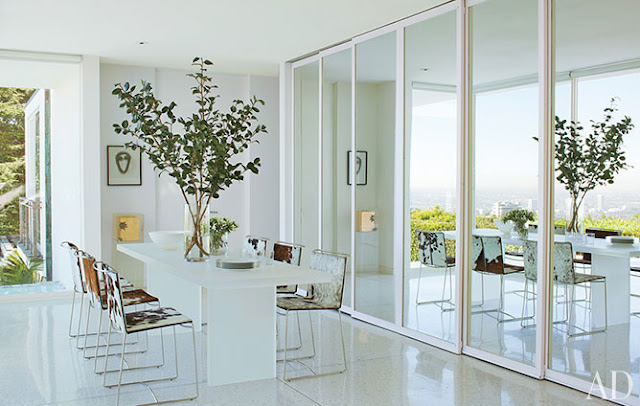Daniel Romualdez was born
and raised in the Philippine capital of Manila, a place where family
expectations still carry a good deal of weight. His mother and his father, a
diplomat, wanted their son to go into banking. He was more interested in
houses. “I would look at my mom’s magazines—all the designers had flocks of
Lalanne sheep inside their homes,” he recalls wistfully, referring to the
fluffy and highly collectible sculptures by artist François-Xavier Lalanne.
Romualdez was sent to boarding school in the U.S. and later attended Yale,
where he was encouraged to study economics.
He even worked briefly on Wall
Street, but the experience only fueled his creative urges. After earning a
master’s degree from Columbia’s School of Architecture and working in the
offices of Thierry Despont and Robert A.M. Stern, he opened his own practice.
Since 1993 he has been dreaming up chic and sophisticated residences for just
the sort of client who would appreciate Lalanne sheep.
Romualdez is not, however,
someone with a signature look. He recently completed a residence in Aspen,
Colorado, for Aerin Lauder that is at once modern and woodsy, while his latest
store for Tory Burch, on Madison Avenue, feels like a high-gloss private
townhouse. What his projects do have in common are a strong concern for context
and a compelling design narrative that steers clear of cliché. “What I like to
do,” says Romualdez, “is to abstract an idea—a house in the country, a beach
house—and whittle it down so it’s not the obvious, literal thing.” In his own
Manhattan prewar apartment, he channeled Adolf Loos via Edwin Lutyens,
leavening Doric columns and gilded 18th-century chairs with scrubbed pine
floors and sofas from Crate and Barrel. In Montauk, New York, where he owns a
compound of weathered cedar-shingle cottages, Romualdez breathed new life into
nautical tropes, using only splashes of blue and white and playing humble
wicker furniture against Gustavian pieces.
Several years ago, while
visiting Los Angeles, he spontaneously asked a real-estate broker to show him a
few properties for sale. The first house he was taken to, in Beverly Hills, was
an iceberg-white box with glass walls framing views of the city. “It was as
though I were struck by lightning,” says Romualdez, perched on a daybed in the
living room of said house, California casual in a denim shirt, cutoffs, and
Gucci loafers. The modestly scaled one-and-a-half-story residence was built in
the 1950s but had been fully renovated, providing an irresistible canvas, he
says, for “a New Yorker’s fantasy of living in L.A.”
As far as the sun-flooded
interiors were concerned, Romualdez was eager “to do a modern house, but
without the Mies van der Rohe chairs and the other expected choices. I wanted
to find things that were more organic.” He conceived the daybed and the living
room’s other upholstered pieces, covering them in a raw silk that, together
with a fur rug, a cocktail table of reclaimed beams, and a pair of John
Dickinson lamps, helps to soften the space’s hard edges.
The art chosen is
personal and often whimsical, intended, he says, to “push the envelope a little
and have fun.” A wall-size canvas by Sarah Morris spells out the word INSTANT,
telegraphing both the immediate gratification Romualdez felt when he acquired
the house and his desire to pull it together quickly. Artworks by friends round
out the room—a bust by Anh Duong, who traded the self-portrait for a studio
renovation; a text-dense painting by fellow Yale alumnus Sean Landers; a
Richard Dupont polyurethane head sculpture filled with chunks of wood, because,
the designer explains, “that’s what I do all day—work with two-by-fours.”
Perhaps the most meaningful piece stands next to the daybed: a furry white
Lalanne sheep.














